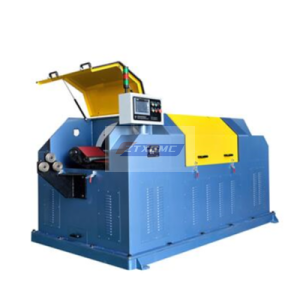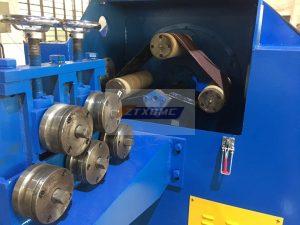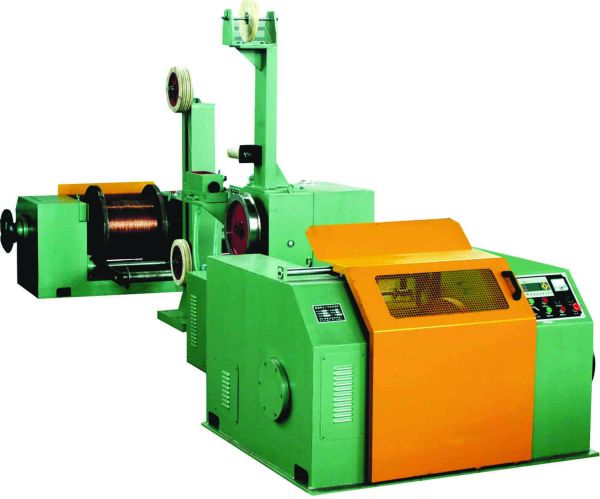Sanding Belt Attachment for Grinder
Tips for Properly Using a Sanding Belt Attachment on Your Grinder
A sanding belt grinding descaler for a grinder can be a versatile tool for a variety of projects. Whether you are working on woodworking projects, metal fabrication, or even automotive repairs, a sanding belt attachment can help you achieve smooth and polished surfaces with ease. However, using a sanding belt attachment on your grinder requires some knowledge and skill to ensure that you get the best results. In this article, we will provide you with some tips for properly using a sanding belt attachment on your grinder.
First and foremost, it is important to choose the right sanding belt for your project. Sanding belts come in a variety of grits, ranging from coarse to fine. The grit of the sanding belt will determine how aggressive the sanding action is, as well as how smooth the finish will be. For rough shaping and material removal, a coarse grit sanding belt is ideal. For finishing and polishing, a fine grit sanding belt is more suitable. Make sure to select the appropriate grit for the task at hand to achieve the desired results.

Before attaching the sanding belt to your grinder, make sure that the grinder is turned off and unplugged. This will prevent any accidents or injuries while you are installing the sanding belt. Follow the manufacturer’s instructions for attaching the sanding belt to your grinder, ensuring that it is securely in place before turning the grinder on. Check the tension of the sanding belt to make sure it is not too loose or too tight. A properly tensioned sanding belt will provide optimal performance and prevent premature wear.
When using a sanding belt attachment on your grinder, it is important to maintain a steady and even pressure on the workpiece. Avoid applying too much pressure, as this can cause the sanding belt to wear out quickly and result in uneven sanding. Let the sanding belt do the work, moving the grinder back and forth in a smooth and controlled motion. Take your time and work in small sections to ensure a consistent finish.
It is also important to keep the sanding belt attachment clean and free of debris. Periodically stop and inspect the sanding belt for any buildup of material or dust. Use a cleaning brush to remove any debris from the sanding belt, as this can affect its performance and result in uneven sanding. Additionally, make sure to regularly check the condition of the sanding belt for any signs of wear or damage. Replace the sanding belt as needed to maintain optimal performance.
In conclusion, a sanding belt attachment for a grinder can be a valuable tool for a variety of projects. By following these tips for properly using a sanding belt attachment on your grinder, you can achieve smooth and polished surfaces with ease. Remember to choose the right grit sanding belt for your project, properly install and tension the sanding belt, maintain a steady pressure on the workpiece, and keep the sanding belt clean and free of debris. With proper care and technique, you can achieve professional results with your sanding belt attachment.
How to Choose the Right Sanding Belt Attachment for Your Grinder
When it comes to sanding, having the right tools can make all the difference in achieving a smooth and professional finish. One essential tool for sanding is a sanding belt attachment for a grinder. This attachment allows you to easily sand and smooth out surfaces with precision and efficiency. However, with so many options available on the market, it can be overwhelming to choose the right sanding belt attachment for your grinder. In this article, we will discuss some key factors to consider when selecting a sanding belt attachment to ensure you get the best results for your projects.
One of the first things to consider when choosing a Sand belt grinding machine for your grinder is the size of the attachment. The size of the attachment should match the size of your grinder to ensure a proper fit and optimal performance. Using an attachment that is too small or too large for your grinder can result in uneven sanding and potentially damage the attachment or the grinder itself. It is important to check the specifications of both your grinder and the attachment to ensure compatibility.

Another important factor to consider is the grit of the sanding belt. The grit of the sanding belt determines how coarse or fine the sanding action will be. Lower grit numbers indicate a coarser sanding action, which is ideal for removing material quickly or smoothing out rough surfaces. Higher grit numbers indicate a finer sanding action, which is suitable for finishing and polishing surfaces. It is important to choose the right grit for your specific project to achieve the desired results.
In addition to size and grit, it is also important to consider the material of the sanding belt attachment. Sanding belt attachments are typically made from materials such as aluminum oxide, zirconia alumina, or ceramic. Each material has its own unique properties and is suitable for different types of sanding tasks. For example, aluminum oxide is a versatile material that is suitable for general-purpose sanding, while zirconia alumina is more durable and long-lasting, making it ideal for heavy-duty sanding tasks. Ceramic is the most durable material and is best suited for high-pressure sanding applications.
When selecting a sanding belt attachment for your grinder, it is also important to consider the backing material of the sanding belt. The backing material provides support and stability to the sanding belt, ensuring smooth and consistent sanding results. Common backing materials include cloth, paper, and polyester. Cloth backing is durable and tear-resistant, making it suitable for heavy-duty sanding tasks. Paper backing is flexible and conformable, making it ideal for contour sanding. Polyester backing is moisture-resistant and long-lasting, making it suitable for wet sanding applications.
In conclusion, choosing the right sanding belt attachment for your grinder is essential for achieving professional and high-quality sanding results. By considering factors such as size, grit, material, and backing material, you can select the best attachment for your specific project needs. Whether you are sanding wood, metal, or other materials, having the right sanding belt attachment will make your sanding tasks easier and more efficient. Invest in a high-quality sanding belt attachment for your grinder and take your sanding projects to the next level.





